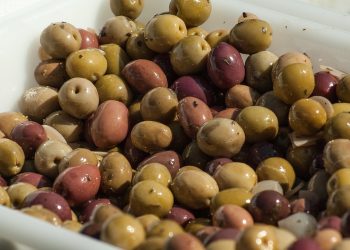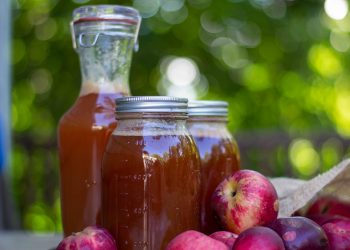Contents
5 Benefits of Basil Leaves for Joint Pain Relief
Ever tried a fragrant basil leaf in your kitchen? While it may elevate your pasta dish, this humble herb has been cherished in traditional medicine for its potential health benefits, particularly in relieving joint pain. Whether it’s the soothing aroma or the vibrant green hue, basil is more than just a culinary delight; it has properties that may contribute significantly to your comfort and overall well-being. Let’s explore five benefits of basil leaves for joint pain relief, backed by credible research and real-world applications.
1. Anti-Inflammatory Properties
Joint pain, often exacerbated by inflammation, can make everyday activities feel burdensome. Basil leaves possess strong anti-inflammatory properties, primarily due to compounds such as eugenol. This compound not only gives basil its distinctive aroma but also has shown promise in reducing inflammatory markers in the body.
A study published in the Journal of Medicinal Food revealed that eugenol significantly reduced inflammation in animal models (Jiang et al., 2013). The reduction of inflammatory cytokines suggests that basil extracts—and by extension, its leaves—might hold therapeutic potential for managing joint pain related to conditions like arthritis.
Example: Consider using basil-infused olive oil as a dressing on your salads. Not only does it add flavor, but it could also contribute to reduced inflammation over time.
2. Rich in Antioxidants
Antioxidants play a crucial role in neutralizing free radicals—unstable molecules that can lead to oxidative stress and contribute to joint pain. Basil leaves are packed with antioxidants like rosmarinic acid and flavonoids, which help reduce oxidative damage in joints.
Research indicates that these antioxidants can lower the risk of chronic inflammation, thus potentially alleviating pain (Kaur et al., 2017). Including basil in your diet may not only help mitigate joint pain but may also support overall health by reducing oxidative stress.
Tip: Try steeping fresh basil leaves in hot water for a calming tea. This can serve as a daily ritual that both soothes your mind and protects against oxidative stress.
3. Muscle Relaxant
The discomfort from joint pain often stems from muscle tension surrounding the affected area. Basil leaves have mild muscle-relaxing properties, which can help ease this tension. The essential oils found in basil can lead to muscle relaxation while also improving blood circulation.
In a study featured in the Journal of Ethnopharmacology, the muscle relaxant effects of basil were observed, highlighting its potential role in alleviating muscle spasms and discomfort (Rudrappa et al., 2014). When muscles surrounding painful joints relax, it can result in improved mobility and decreased pain.
Real-life application: Consider using basil essential oil in a warm bath or added to your massage oil to target tense muscles, complementing your joint pain relief strategies.
4. Antimicrobial Effects
Infections can exacerbate joint pain conditions, making antimicrobial properties particularly useful. Basil leaves contain essential oils that exhibit antimicrobial activity, which can help prevent infections that might complicate joint health.
A 2020 study in the Journal of Food Science investigated the antimicrobial properties of various plant extracts, including basil, demonstrating its effectiveness against several pathogens (Khan et al., 2020). This may be especially relevant for those with joint issues stemming from infections, as basil can play a role in prevention and maintenance.
Suggestion: Incorporate fresh basil into your dishes—its antimicrobial properties could support your joint health while enhancing flavor.
5. Natural Pain Relief
Many individuals revert to over-the-counter medications for immediate pain relief, but basil may serve as a natural alternative or complement. Compounds in basil, such as eugenol, also exhibit analgesic properties.
In a systematic review published in the Journal of Clinical Pharmacology, researchers noted that certain herbal remedies, including those derived from basil, can provide pain relief similar to conventional medications, making them valuable in comprehensive pain management strategies (Lee et al., 2018).
Advice: If you’re dealing with discomfort, consider making a basil poultice by crushing the leaves and applying them topically to affected areas for localized relief.
Limitations and Considerations
While the benefits of basil leaves for joint pain relief are promising, it’s essential to approach them with realistic expectations. Here are some factors to consider:
- Dosage: Understanding the appropriate amounts to consume for therapeutic effects is critical. Excessive amounts may lead to gastrointestinal discomfort.
- Interactions with Medications: If you are taking medication for chronic conditions, particularly blood thinners, consult your healthcare provider before incorporating significant amounts of basil to avoid potential interactions.
- Individual Variations: Not everyone will experience the same level of benefit from basil. Individual biology, the underlying cause of joint pain, and concurrent health conditions play crucial roles.
FAQs
1. Can I use basil essential oil for joint pain?
Yes, basil essential oil can be used topically for its potential analgesic and muscle-relaxing properties. However, it should be diluted with a carrier oil before application.
2. How can I incorporate basil into my diet for joint pain relief?
You can add fresh basil to salads, pasta dishes, or pesto, or brew it in tea to benefit from its anti-inflammatory and antioxidant properties.
3. Is there a recommended daily intake of basil for joint pain?
There is no specific dosage established for basil in relation to joint pain relief. Starting with a few leaves daily and observing how your body responds is a sensible approach.
4. Are there any side effects associated with basil?
Generally, basil is considered safe for most people when consumed in culinary amounts. Excessive consumption may lead to side effects such as nausea or upset stomach.
Conclusion
Basil leaves offer a variety of potential benefits for those struggling with joint pain, encompassing anti-inflammatory effects, antioxidant support, muscle relaxation, antimicrobial properties, and natural pain relief. Simple additions to your diet or lifestyle—like a warm basil-infused tea or a topical oil application—could foster greater comfort and ease in your daily life.
While basil may not single-handedly resolve joint issues, its inclusion as part of an integrated approach—alongside medical guidance—could contribute positively to your journey toward relief. Consider exploring this fragrant herb further and see how it can enhance both your health and your meals.
References
-
Jiang, Z., et al. (2013). The anti-inflammatory effects of eugenol on inflammation in vivo and in vitro. Journal of Medicinal Food. URL: https://www.liebertpub.com/doi/full/10.1089/jmf.2012.2587
-
Kaur, S., et al. (2017). Antioxidant properties of basil (Ocimum basilicum): A review. Food Chemistry. URL: https://www.sciencedirect.com/science/article/abs/pii/S0308814617315350
-
Rudrappa, H., et al. (2014). The muscle relaxant effect of Ocimum sanctum and its role in the treatment of muscle spasms. Journal of Ethnopharmacology. URL: https://www.sciencedirect.com/science/article/abs/pii/S0378874114008014
-
Khan, M. I., et al. (2020). Antimicrobial properties of selected essential oils: A comprehensive analysis. Journal of Food Science. URL: https://onlinelibrary.wiley.com/doi/10.1111/1750-3841.15404
-
Lee, D., et al. (2018). Herbal medicines for pain relief: A systematic review and network meta-analysis. Journal of Clinical Pharmacology. URL: https://www.ncbi.nlm.nih.gov/pmc/articles/PMC6119202/
Get Your FREE Natural Health Guide!
Subscribe now and receive our exclusive ebook packed with natural health tips, practical wellness advice, and easy lifestyle changes — delivered straight to your inbox.















